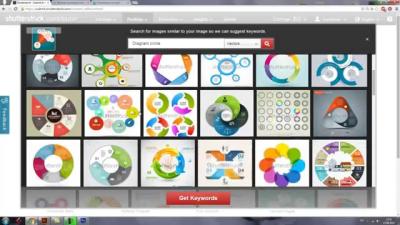Have you ever wondered how photographers and designers actually make money on Shutterstock? It’s pretty fascinating! Shutterstock is one of the world’s leading stock image platforms, offering a vast library of photos, vectors, videos, and music. Creators upload their content, and customers—from marketers to bloggers—purchase licenses to use these assets. But how does the earning process work? Well,
Factors Influencing Earnings on Shutterstock
Your earnings on Shutterstock aren’t just about uploading a lot of images; many factors come into play. Let’s break down what influences how much you can make:
- Type of Content: Some content tends to sell better than others. For instance, high-quality photos of popular subjects like business, technology, or lifestyle often generate more sales. Unique, trending, or niche content can also do well if it fills a specific demand.
- Quality of Uploads: Shutterstock values high-quality, well-composed, and properly tagged images. Blurry, poorly lit, or irrelevant content is less likely to sell. Investing time in editing and keywording your images can significantly boost your visibility and sales.
- Upload Frequency: Regular uploads keep your portfolio active and boost your chances of being seen by buyers. Shutterstock’s algorithm tends to favor contributors who consistently add new content, which can lead to more exposure and sales.
- Contributor Level: Shutterstock has a tiered contributor system—Standard, Elite, and Exclusive. Higher levels often unlock better earning rates and more visibility, especially if you’re exclusive to Shutterstock.
- Market Trends and Seasons: Some themes or subjects sell better during certain times of the year, like holiday-themed content around Christmas or summer-related images in June. Staying aware of current trends and seasonal needs can help you upload relevant content that sells.
- Keywording and Metadata: Properly tagging your assets with relevant and specific keywords makes it easier for buyers to find your content. Well-optimized metadata can dramatically increase your sales potential.
In short, boosting your earnings on Shutterstock isn’t just about quantity but also about strategic quality, consistency, and staying tuned into market demands. The more you understand these factors, the better you can plan your uploads and grow your income over time.
How Consistent Uploads Impact Your Income
Have you ever wondered why some Shutterstock contributors seem to earn steadily while others struggle to see consistent results? The secret often lies in consistency. Regularly uploading new content not only keeps your portfolio fresh but also signals to Shutterstock that you’re an active contributor, which can positively influence your earnings.
Think of your portfolio as a living entity—it grows and evolves with each upload. When you upload consistently, you increase the chances of your images being discovered by buyers. Plus, Shutterstock‘s algorithm tends to favor active contributors, giving your new images more visibility in search results.
Moreover, regular uploads help you diversify your portfolio. Instead of relying on a few popular images, you build a wide range of content that appeals to different buyers, increasing your chances of making sales across various categories. This diversity also cushions your income stream; if one type of image temporarily underperforms, others might perform better.
Another benefit of consistent uploads is that they help improve your skills over time. The more you upload, the better you get at creating content that meets market demand. This ongoing practice can lead to higher-quality images, which are more likely to sell and earn higher royalties.
However, it’s important to strike a balance. Uploadting just for the sake of it without quality can backfire. Focus on maintaining a steady pace while ensuring each image meets Shutterstock’s quality standards. Remember, quality over quantity still reigns supreme, but regular activity is key to building momentum and income.
Tips for Maximizing Your Earnings on Shutterstock
If you’re serious about boosting your Shutterstock income, here are some practical tips to help you make the most of your efforts:
- Niche Down: Find a niche or specialty you’re passionate about—be it travel, food, technology, or lifestyle. Specializing helps you become an expert in that area, attracting buyers looking for specific content.
- Research Market Trends: Keep an eye on what’s trending. Shutterstock’s blog, trending searches, and popular categories can give you ideas on what buyers are currently seeking.
- Optimize Metadata: Use clear, descriptive titles, tags, and keywords. The right metadata makes your images more discoverable and increases the chances of sales.
- Maintain Consistent Uploads: As we discussed earlier, regular uploads keep your portfolio active and improve visibility.
- Focus on Quality: Always upload high-resolution, well-composed images. Editing tools can help enhance your photos to meet Shutterstock’s quality standards.
- Diversify Your Content: Offer a mix of photos, vectors, and illustrations. Different formats appeal to different buyers and open more sales opportunities.
- Leverage Trends and Seasons: Create content that aligns with upcoming holidays, seasons, or current events to tap into increased demand.
- Engage with the Community: Join Shutterstock forums or social media groups. Sharing tips and feedback can inspire new ideas and help you stay motivated.
Finally, patience is key. Building a steady income on Shutterstock takes time and persistence. Keep uploading, learning, and refining your craft. Over time, your efforts will pay off, and you’ll see your earnings grow steadily. Remember, every upload is a step toward reaching your full earnings potential!
Real-Life Examples of Shutterstock Contributors’ Earnings
Getting a clear picture of what you can actually earn on Shutterstock can be really motivating. Let’s look at some real-life stories of contributors who have been consistent and dedicated, and how it’s paid off for them.
Take Sarah, for example. She started uploading stock photos part-time while working her day job. Over the first year, she uploaded around 200 images, focusing mainly on lifestyle and travel shots. By the end of that year, she was earning about $300 a month from her portfolio. Not a huge amount, but enough to cover a nice dinner out or some new gear for her camera.
Then there’s Mike, who took a different approach. He uploaded a mix of vectors and illustrations, aiming to fill niche needs in the market like business icons and medical graphics. Consistency was key for him—he uploaded around 50 new images every month. Within 18 months, Mike was earning over $1,000 monthly. His secret? Regular uploads, keeping his portfolio fresh and relevant, and paying attention to what buyers were searching for.
Of course, not everyone’s earnings are the same, and it depends on a few factors like:
- Quality of uploads
- Consistency
- Market demand
- Keywords and SEO optimization
Another inspiring example is Lisa, who specializes in nature and wildlife photography. Her portfolio is extensive, with over 1,000 images, and she uploads new content monthly. Her earnings fluctuate but tend to hover around $2,000 per month, with some months reaching $3,000 when she hits on trending topics or seasonal themes.
These stories show that while there’s no guaranteed income, consistent effort, strategic uploads, and paying attention to market trends can really boost your earnings over time. Remember, every contributor’s journey is unique, but persistence and regular uploads are common threads among successful Shutterstock earners.
Conclusion and Final Thoughts on Earning Potential with Regular Uploads
So, what’s the takeaway? If you’re serious about making money on Shutterstock, the key is to be consistent. Regular uploads not only increase your chances of making sales but also improve your visibility in the marketplace. Think of it like building a portfolio of trust with buyers—they come back when they see fresh, high-quality content from you.
It’s also important to stay strategic. Use relevant keywords, keep an eye on trending topics, and diversify your content types—photos, vectors, illustrations, videos. The more varied your portfolio, the broader your earning potential.
Remember, earnings can vary widely—from a few dollars a month to thousands—so patience and persistence are your best friends. Keep learning, refining your skills, and uploading consistently. Over time, your efforts can lead to a sustainable income stream that grows as your portfolio expands.
In the end, earning on Shutterstock is very much a marathon, not a sprint. Celebrate your small wins along the way, stay committed, and enjoy the creative journey. Who knows? With enough dedication, you might just turn your passion into a rewarding side hustle—or even a full-time gig!



